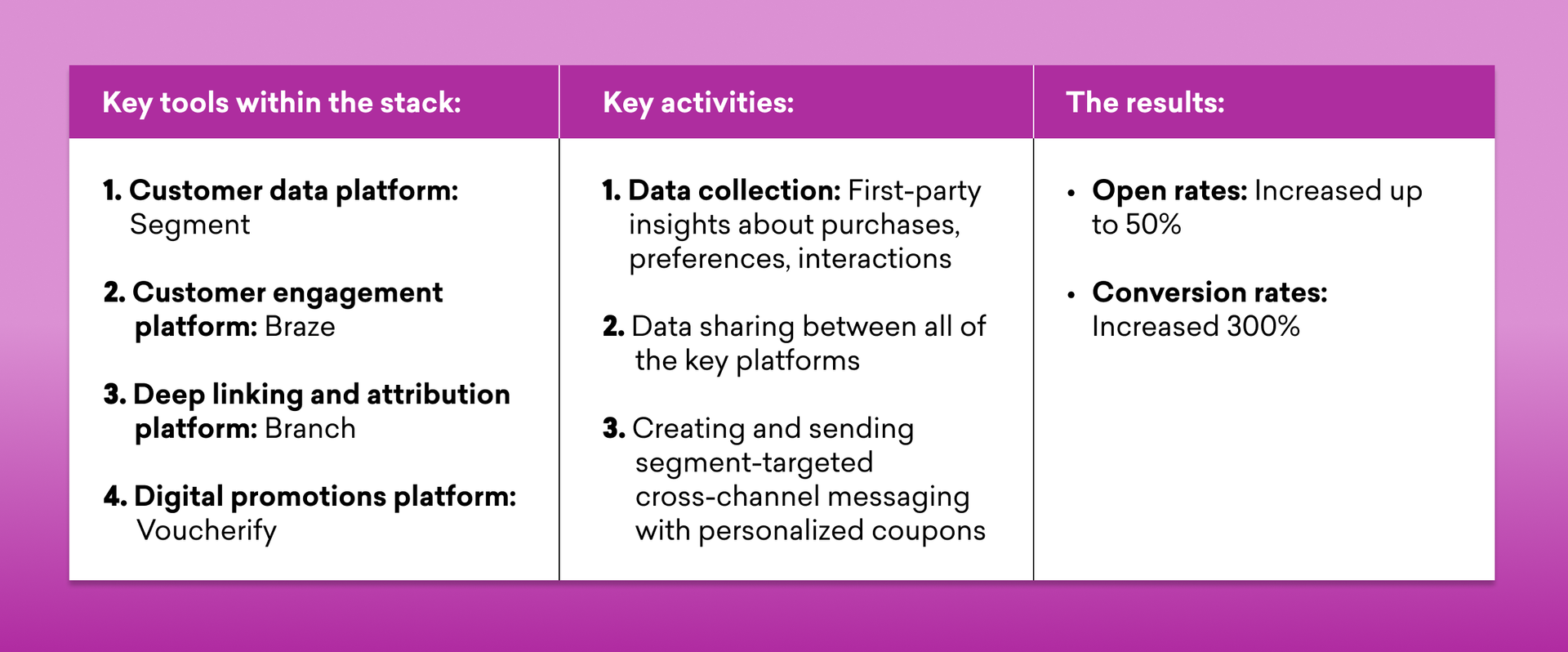How the Right Marketing Stacks and Tech Ecosystems Support Customer Engagement
Published on June 09, 2021/Last edited on June 09, 2021/3 min read


Mary Kearl
WriterIn a world where technology is increasingly central to the way customers engage with your brand, bringing together the right mix of marketing solutions as part of a comprehensive marketing stack—also known as a marketing ecosystem—could be the difference between developing a customer engagement program that misses the mark and one that delivers key gains in customer lifetime value, retention, and more.
What Is a Marketing Tech Stack?
Think of all of the different tools and technologies your company currently uses to learn about, connect with, and deliver experiences for your customers. These technology platforms are the building blocks of your company's marketing tech stack. Even if your organization only uses two different platforms to support your customer engagement efforts, you have a stack—albeit quite a small one.

What's the Difference Between Marketing Clouds and Marketing Stacks?
Marketing stacks and marketing clouds offer two different paths for building out the tools your company needs to connect with and grow your audience and drive customer outcomes.

While marketing clouds offer the promise of convenience, those innovative brands you know and love (think Burger King and Delivery Hero) have evolved beyond all-in-one marketing solutions and have instead built out best-in-class stacks to support their unique strategies and customer needs. Current market trends are clear: Built-for-purpose marketing ecosystems offer the path forward for brands looking to forge stronger customer relationships.
What Tools Do Companies Usually Add to Their Marketing Stacks?
No two brands' marketing ecosystems will look exactly alike. That's the beauty of the flexibility of—and customizations available with—marketing stacks. That said, there are some common solutions many companies use to power their marketing efforts, including:
- Customer engagement platforms
- Customer data platforms (CDPs)
- Data warehouses
- Product and behavioral analytics platforms
- Customer service platforms
- AdTech and ad retargeting tools
- Social media messaging (SMM) and social listening tools
- Conversion optimization tools, including UI/UX testing software
- Content management systems (CMS)
- Marketing calendar, organization, and task management tools
- Search engine optimization (SEO) and search engine marketing (SEM) tools
- Data enrichment tools, including location data providers
- Message translation tools
- Deep linking tools
- Recommendation engines
A Powerful MarTech Stack in Action: How Pomelo's Marketing Ecosystem Delivered a 300% Increase in Conversions
Personalization is powerful. It's what customers expect and it drives engagement and conversions. It's also not easy to pull off if you lack the right tools. That's why when Southeast Asian fashion brand Pomelo wanted to create a personalized marketing strategy tailored to individual customer behaviors and preferences, they tapped key players within their marketing ecosystem to work together to bring their vision to life.

How to Assemble a Best-in-Class Marketing Stack That Supports Your Needs
Get our guide: Connected Engagement: Understanding Today’s Marketing Stacks and Ecosystems for seven essential tips for building out a marketing stack, advice for avoiding common marketing ecosystem pitfalls, and real-world examples of how Payomatic and other leading brands leverage their marketing technology platforms to drive impressive engagement and revenue growth.
Related Tags
Releated Content
View the Blog
Enterprise generative AI: Transforming data, decisions, and customer experiences

Team Braze

Omnichannel personalization: Delivering consistent, connected customer experiences

Team Braze

Are you AI-savvy enough to survive? A wake-up call for CMOs
